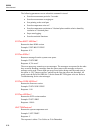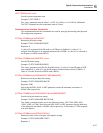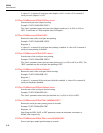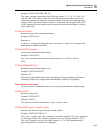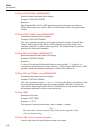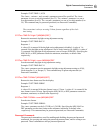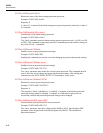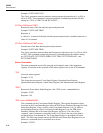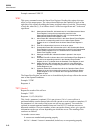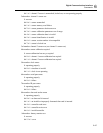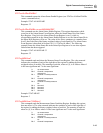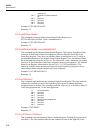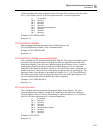
5020A
Users Manual
6-44
Example: SYST:PASS:STAT 1
The <bool> parameter turns the statistics settings password-protection on (1 or ON) or
off (0 or OFF). This command is password protected. Commands protected with this
setting are: CALC:AVER:CLE and DATA:DST... ,
SYSTem:PASSword:TIME?
Returns the state of the date and time password-protection.
Example: SYST:PASS:TIME?
Response: 0
A value of 1 is returned if the date and time password-protection is enabled. otherwise, a
value of 0 is returned.
SYSTem:PASSword:TIME <bool>
Sets the state of the date and time password-protection.
Example: SYST:PASS:TIME 1
The <bool> parameter turns the date and time password-protection on (1 or ON) or off (0
or OFF). This command is password protected. Commands protected with this setting
are: SYST:DATE, SYST:DATE:FORM, SYST:TIME, SYST:TIME:DAYL, and
SYST:TIME:FORM.
Status Commands
The status commands are used for querying and setting the state of the instrument
registers. For details on the operation of the status registers refer to the SCPI standards.
*CLS
Clears the status registers.
Example: *CLS
This clears the error queue, Event Status Register, Operation Status Register,
Questionable Status Register, Alarm Status Register, and Measurement status Register.
*ESE?
Returns the Event Status Enable Register. (See *ESE <num> command below.)
Example: *ESE?
Response: 189
*ESE <num>|MIN|MAX|DEF
This command sets the Event Status Enable Register. This register determines which
event bits of the Event Status Register affect the ESB Event Summary-Message Bit of the
Status Byte Register. If any event bit of the Event Status Register is set (1) while its
corresponding mask bit of the Event Status Enable Register is set, the ESB Event
Summary-Message Bit of the Status Byte Register will be set. The value of the
<numeric_value> parameter is a number from 0 to 255 that is the sum of the binary-
weighted values of each mask bit. The Event Status Register is described in Section
below. The following example causes the ESB bit in the Status Byte Register to be set
whenever a command error or execution error occurs.
Example: *ESE 32



